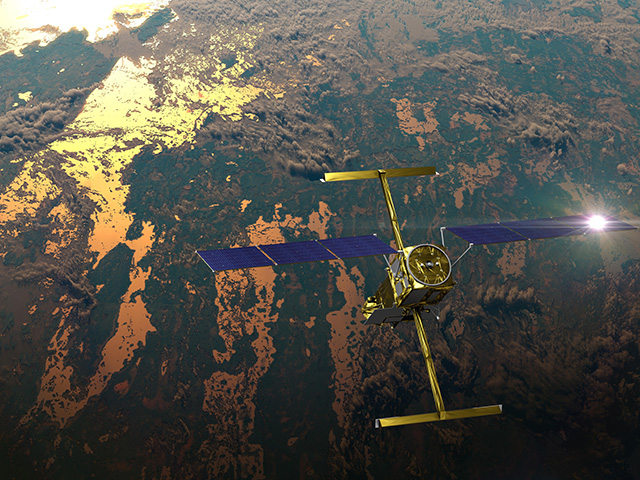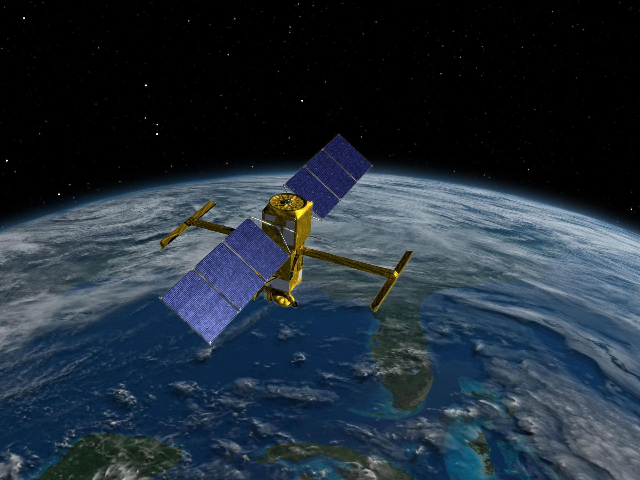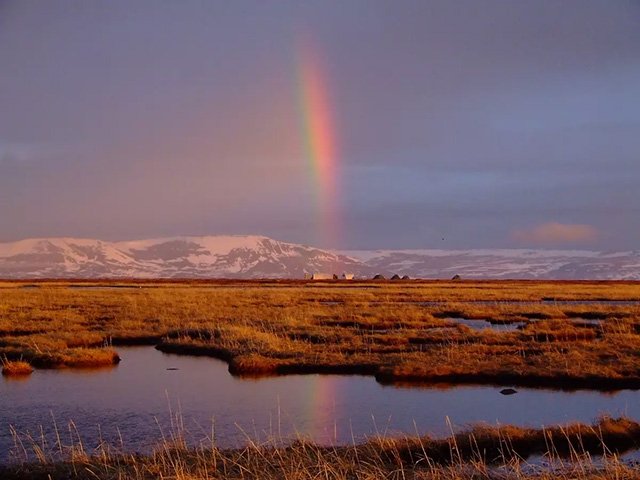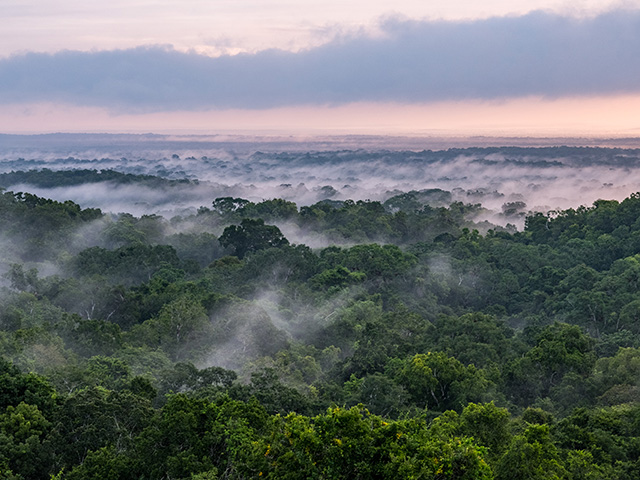News | July 1, 2013
Space Station gets an attitude adjustment for solar science
By Jessica Nimon,
NASA's Johnson Space Center
 The International Space Station's change in position accommodates solar research from an orbital vantage point by lengthening the window of time to observe a full rotation of the sun for data collection from the Solar observatory. Image Credit: NASA
The International Space Station's change in position accommodates solar research from an orbital vantage point by lengthening the window of time to observe a full rotation of the sun for data collection from the Solar observatory. Image Credit: NASA
“The European scientists requested that we reposition the station slightly because by having this period of time they could bridge over the two Solar observing visibility windows, allowing them to view the sun for a full solar rotation without interruption,” said International Space Station Program Scientist Julie Robinson, Ph.D. “The International Space Station Program took a look at the request and was able to change the station's position to increase science return."
 NASA's Solar Dynamics Observatory (SDO) captured this image of an M5.7-class flare on May 3. This image shows light in the 131-angstrom wavelength, a wavelength of light that can show material at the very hot temperatures of a solar flare and that is typically colorized in teal. Image Credit: NASA
NASA's Solar Dynamics Observatory (SDO) captured this image of an M5.7-class flare on May 3. This image shows light in the 131-angstrom wavelength, a wavelength of light that can show material at the very hot temperatures of a solar flare and that is typically colorized in teal. Image Credit: NASA
“A very important contribution from the Solar ‘bridging’ measurements is the possibility it brings to perform inter-comparisons over an entire period of a Solar rotation with data from other solar instruments in orbit (e.g. a comparison of ESA’s Solar-SOLACES data and NASA's SDO/EVE data),” said ESA Solar Project Scientist Astrid Orr, Ph.D. “The December bridging already shows that these particular data sets agree extremely well with each other.”
The measurements for this Solar window observation are planned to run from June 18 to July 23, with the bridging event beginning on July 1. Normally viewing from the station only allows for short visibility windows of 10 to 12 days at a frequency of about once a month. After that timeframe, the observation window is blocked by the structure of the station itself, such as the solar arrays. Changing the position of the station increases the visibility of the sun, enabling scientists to view a full rotation from the orbital vantage point.
 A view of the zenith and forward sides of the International Space Station’s Columbus module showing the Monitoring on the External Payload Facility of Columbus (Solar), European Technology Exposure Facility (EuTEF) and Materials International Space Station Experiment (MISSE) facility. Image Credit: NASA
A view of the zenith and forward sides of the International Space Station’s Columbus module showing the Monitoring on the External Payload Facility of Columbus (Solar), European Technology Exposure Facility (EuTEF) and Materials International Space Station Experiment (MISSE) facility. Image Credit: NASA
The goal of these studies is to gain accurate solar spectral irradiance measurements to understand variations in our environment due to solar radiation. With solar activity increasing, the timing of this adjustment will accommodate the investigations for improved science returns. These data can contribute to improved modeling of sunspots and other solar phenomena. The information also contributes to atmospheric and climatic models, helping researchers to predict sun and space weather activities.
“The bridging makes it possible for the scientists to develop a method for ‘melting’ both sets of data into one reference set of data in absolute physical values for the science community, which includes both solar physicists and climate researchers,” said Orr.
The June viewing window coincides with the Northern Hemisphere summer solstice—on the other side of the globe, this time period corresponds to the Southern Hemisphere winter solstice. During both the summer and winter solstices the gap between viewing opportunities is less than 10 days, making it possible to bridge two visibility windows for a full sun rotation with minimum adjustment to the station's attitude angle.
The station’s orbit is turned at this time so that it is mostly sunlit, giving the instruments optimal opportunity for measurements. This will help to meet the Solar science team’s requirements to observe the sun through a full solar rotation, which would not be possible without the station adjustment, due to orbital mechanics and maneuver limitations of the Solar platform. After the observations complete, the station will return to its standard attitude. The investigations will continue to collect data using shorter observation periods.
“The Solar detectors perform very accurate measurements of the sun's flux: they are measurements in absolute values. In other words, the real amount of flux emitted by the sun in physical units,” said Orr. “This may sound trivial but it is in fact quite difficult to achieve. Many detectors looking at the sun provide only measurements in relative units. On the other hand, absolute measurements are important in order to understand the amount of energy that the sun is emitting and that we receive at the Earth. Like, if somebody has a fever and you are trying to measure their temperature: you can put your hand on their forehead and say that it's hot, or else you can actually measure the temperature with a thermometer. It is useful if the thermometer that you are using has its units stated correctly, otherwise your measurement will be of little use.”
This is an exciting time for solar scientists because with the full solar rotation observation, they will have a second chance to compare their Solar data with results from other measurement instruments. This will give researchers a more complete data set to work with for their studies on the impact of the sun’s radiation on our planet’s environment.
ESA requested an additional temporary change to the space station’s attitude for a third viewing opportunity during Northern Hemisphere's winter solstice, which takes place from Nov. 29 to Dec. 8. “The Solar science team estimates that three ‘science visibility window’ bridging maneuvers will provide them a sufficient level of statistics in their measurements,” said Orr. “Three is a minimum, but it would be sufficient.”





